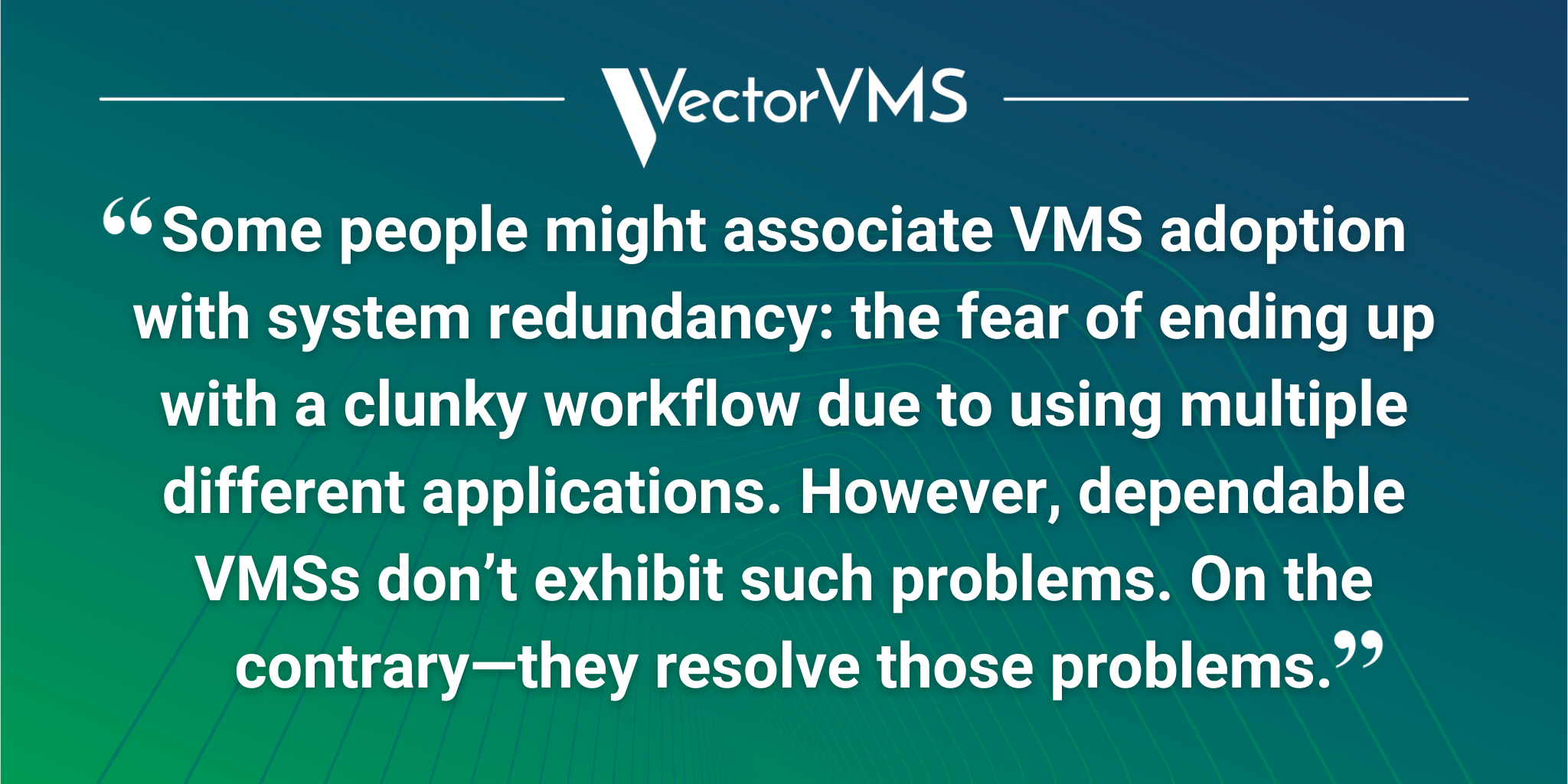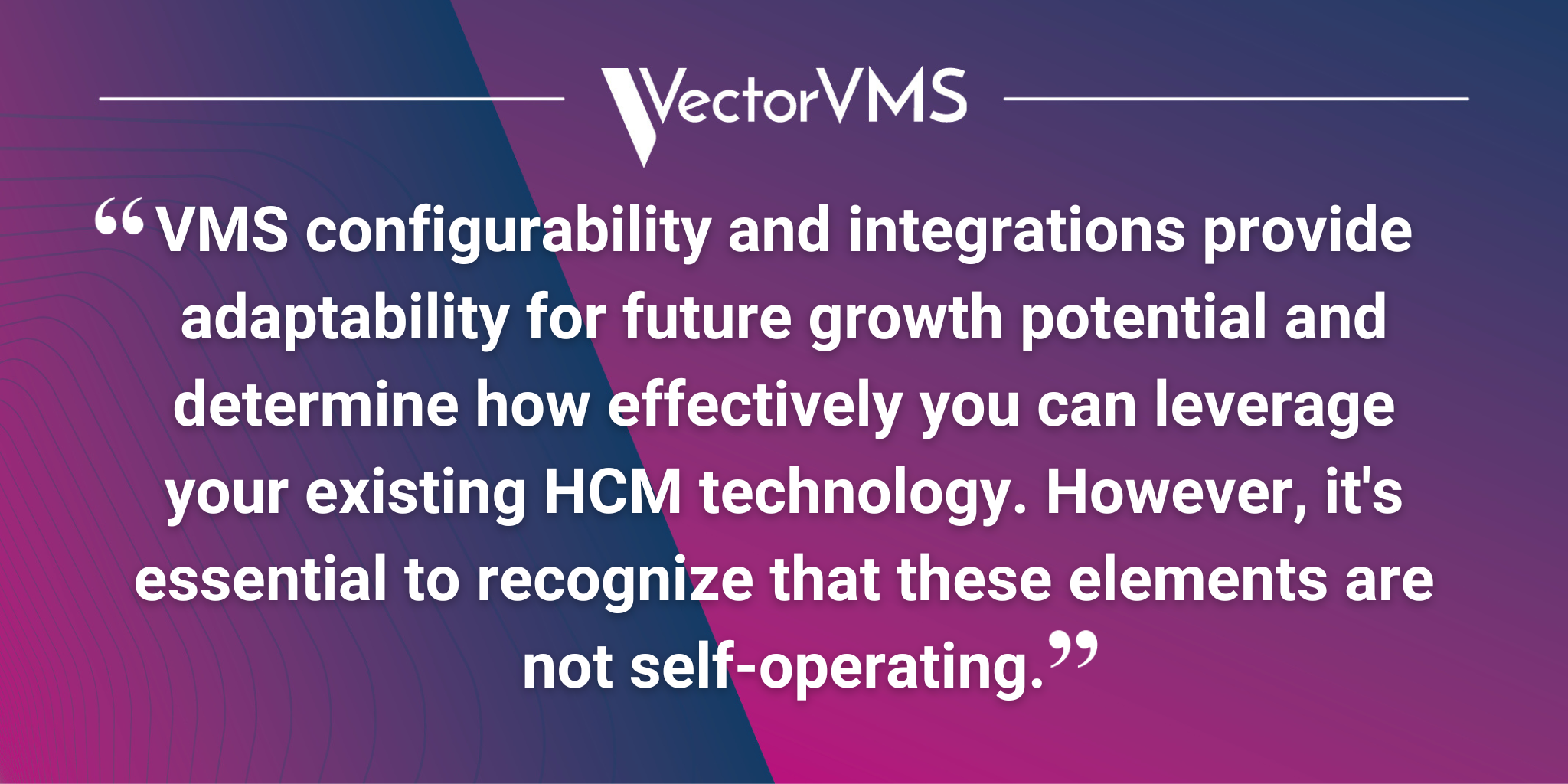A great way to integrate technology into your contingent workforce programs is through a vendor management system (VMS). VMSs have proven effective in improving the quality of hiring processes, expediting talent management, and delivering time and budget savings. That’s why VMSs are used by at least 81% of American companies with a contingent workforce program.
To help you realize these benefits, two key VMS attributes play a central role: configurability and integrations. Hence, to get the most out of our program, it is essential to understand these two concepts, and in this article, we will provide a concise yet effective explanation of them.
The Role of Configurability
To ensure your VMS stays aligned with industry trends and best practices, it must be configurable. As a capability, this facilitates swift adjustments beyond the usual development cycle and empowers organizations to tweak processes according to their distinct needs and requirements. Moreover, as your contingent program matures, configurability enables your VMS to scale and adjust to the changes accompanying growth.
And it’s not just about keeping pace with growth, either: configurability also allows a new VMS to slot into your existing plans. Let’s say that you’re already using some HR tools, but you’re considering a VMS due to the expansion of your program. In that scenario, you’ll want to make sure the VMS you select is compatible with your existing technologies—which means it needs to be configurable.
However, configurability will mean nothing if you don’t have someone on your team who understands how to harness it. Did you know that, if your company can’t hire a dedicated team to manage your VMS, you can consider a Shared Managed Services (SMS) approach?
This service from VectorVMS allows you to maintain control of your program while receiving expert assistance in managing your VMS through one of our program managers. They’re responsible for maximizing your VMS investment, helping you understand how to configure your platform, and guiding you to decide what will work best for your program workflow and requirements.
YOU MIGHT ALSO LIKE | ‘6 Unique VMS Features You Won’t Find Everywhere’

The Role of Integrations
Software integrations can drive efficiency, reduce manual effort, decrease risk, and save costs by harnessing multiple HR tools/apps designed for specific tasks. This concept is key in discussions about tech delivery, as it encompasses how your system can leverage all available technology to enhance your contingent workforce program.
Some people might associate VMS adoption with system redundancy: the fear of ending up with a clunky workflow due to using multiple different applications. However, dependable VMSs don’t exhibit such problems. On the contrary—they resolve those problems.
Good integration capabilities allow a wide range of different technologies to feed into one unique system of record, avoiding duplicate work. In other words, you don’t need to re-enter information from other systems. Once data is entered into one system, it’s simultaneously updated in the VMS. What’s even more advantageous is that this information can be automatically shared with other tools that require it.
For instance, VectorVMS recently introduced a new feature to support the UK’s PAYE income tax and National Insurance (NI) contributions. This enhancement streamlined the setup and automation of complex payment calculations, making the process effortless for employers and allowing organizations to save significant amounts of time.
Again, the role of the expert or program manager is essential here because they are the ones who best understand the VMS platform’s integration potential. They assist you in comprehending which integrations are most beneficial to work with and the correct way to incorporate them. Their expert guidance during implementation prevents issues such as double data entry and can identify ways to leverage the information shared among different integrations.
What Are the Most Common Integrations With a VMS?
You can categorize the standard integrated functionalities and platforms as follows:
- Time-keeping
- Scheduling
- Background checking
- Direct sourcing
- HRIS
- ATS
- ERP
The first three are self-explanatory, but it’s important to provide clear definitions for the following four:
Direct Sourcing: An approach for organizations to leverage their own brand to attract candidates. This allows companies to reach more qualified talent and easily organize incoming candidates into categories to quickly match new opportunities.
To learn more about the benefits of direct sourcing, read our ebook on the topic.
Human Resource Information System (HRIS): Software to automate and streamline HR management tasks. It’s designed to handle employee information, track employee records, and provide access to vital data such as worker attendance records, job histories, and performance evaluations.
Applicant Tracking System (ATS): Software to manage and automate an organization’s hiring process, typically for full-time employees. It creates a repository of all applicant information, enabling hiring managers to easily view and track candidate progress throughout the process.
Enterprise Resource Planning (ERP): Software that facilitates the integration and management of core activities essential for the good functioning of a company. These activities include project management, supply chain operations, manufacturing, accounting, and human resources.
LEARN MORE ABOUT INTEGRATIONS | ‘3 VMS Integrations That Can Save You Time and Money’

The Guiding Hand of Shared Managed Services
VMS configurability and integrations provide adaptability for future growth potential and determine how effectively you can leverage your existing HCM technology. However, it’s essential to recognize that these elements are not self-operating— they require the guidance of an expert, such as a program manager, to fully harness their capabilities. When you combine these two factors, you’ll be on the path to significantly improving the results of your contingent workforce programs!
To learn more about how expert assistance can unlock the technology potential of your VMS, download our ebook ‘The Power of VMS Technology Delivery to Improve Contingent Workforce Programs‘. Alternatively, get in touch to explore how our Shared Managed Services offering can take your business to the next level!
 Meet the Expert
Meet the Expert
Chris Tilley – Senior Channel Account Manager
With over a decade of contingent labor experience, Chris has extensive knowledge of implementation, management, and continuous improvement of extended workforce programs.
As a self-proclaimed “data nerd,” Chris enjoys developing analytics solutions that improve program transparency and inform workforce strategy. Chris builds relationships with VectorVMS clients and partners from the very start, providing implementation oversight as well as ongoing support. Connect with him on LinkedIn.



